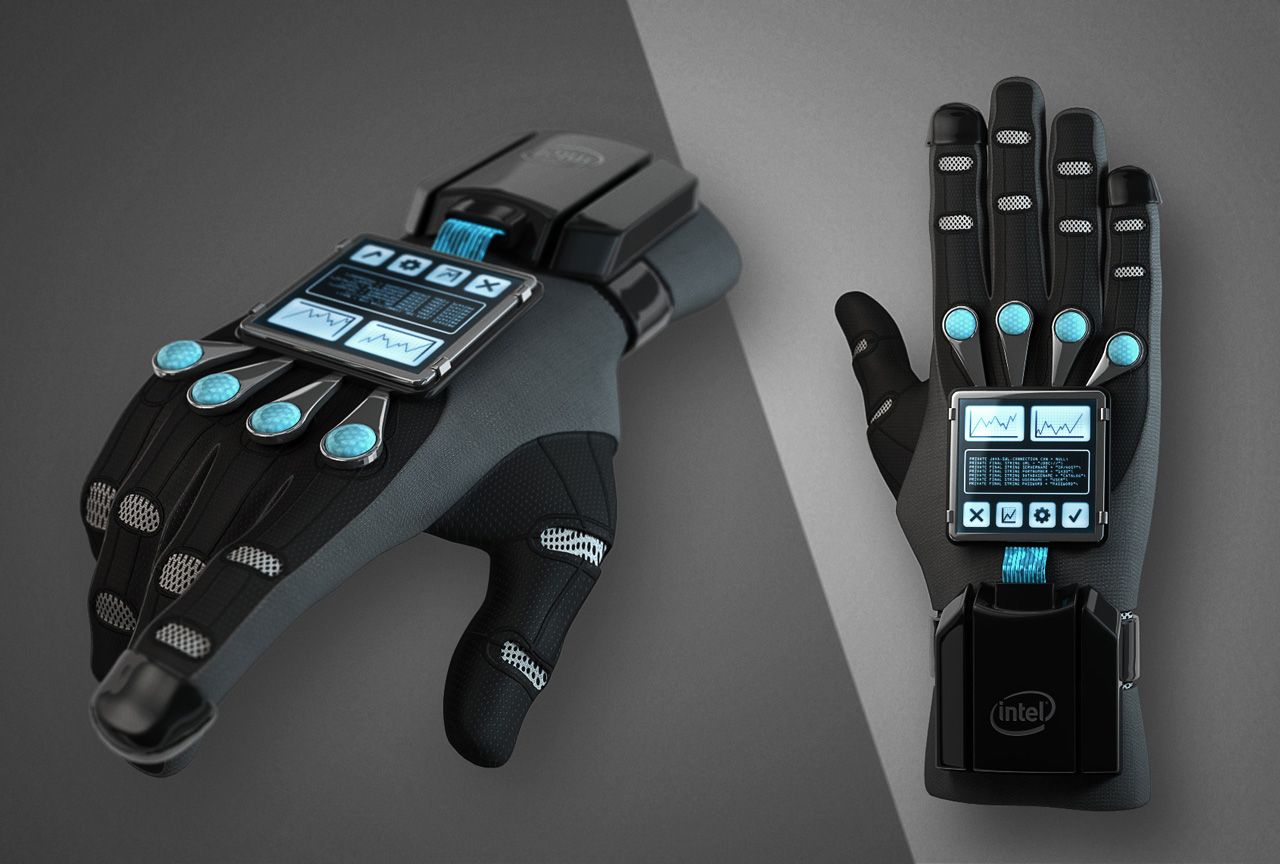In today’s hyper-connected world, technology drives nearly every aspect of daily life. Digital experiences have become more immersive, interactive, and indispensable, largely due to the rapid evolution of cutting-edge gadgets. These state-of-the-art devices not only facilitate communication and productivity but also redefine how we entertain ourselves, manage our health, and even navigate our homes. As modern technology continues to advance at breakneck speed, understanding these gadgets and their transformative impact on our digital experiences is crucial for both tech enthusiasts and everyday users alike.
This comprehensive article delves deep into the realm of innovative gadgets, exploring their evolution, current applications, and future potential. We will examine various categories of devices that are reshaping our interaction with the digital world and discuss the benefits, challenges, and best practices associated with their integration into everyday life
The journey of technological gadgets is a fascinating story of innovation, adaptation, and relentless pursuit of progress. From the bulky, rudimentary devices of the past to the sleek, high-performance tools of today, the evolution of gadgets reflects our growing reliance on digital solutions.
Historically, early electronic devices were limited in functionality, serving basic purposes such as communication or computation. Over the decades, however, significant advancements in microprocessors, connectivity, and user interface design have transformed these devices into versatile tools that empower users in myriad ways. The transition from analog to digital, and more recently to smart technologies, has been marked by several pivotal innovations:
A. Miniaturization – The reduction in size of electronic components has enabled the creation of portable, efficient gadgets that fit into the palm of your hand.
B. Increased Processing Power – Modern devices are equipped with advanced processors that handle complex tasks swiftly, making real-time data processing and multitasking possible.
C. Enhanced Connectivity – The advent of high-speed internet and wireless communication technologies has connected gadgets globally, enabling seamless data exchange and remote operation.
D. User-Centric Design – Today’s gadgets emphasize ease of use, incorporating intuitive interfaces, touchscreens, and voice control to enhance the user experience.
E. Integration of AI and Machine Learning – These technologies have paved the way for smart devices that learn from user behavior, offering personalized experiences and proactive solutions.
Key Cutting-Edge Gadgets of Today
The modern digital landscape is replete with gadgets that are redefining how we interact with technology. Below, we explore several categories of these innovative devices, discussing their features, applications, and the benefits they bring to everyday digital experiences.
A. Smartphones and Mobile Devices
Smartphones have evolved from mere communication tools into powerful handheld computers that serve as our primary gateway to the digital world. With high-resolution displays, robust operating systems, and an endless array of apps, these devices enable users to perform tasks ranging from work-related activities to immersive gaming.
- Advanced Camera Systems – Modern smartphones boast multiple camera lenses with features like optical zoom, night mode, and AI-powered image enhancement, transforming photography and videography.
- Seamless Connectivity – Integration with 5G networks ensures fast data transfer speeds, enhancing streaming, downloading, and real-time communication.
- Mobile Payments and Wallets – Secure payment solutions allow for quick transactions, making smartphones indispensable for modern commerce.
B. Wearable Technology
Wearables, such as smartwatches and fitness trackers, are no longer just gadgets; they have become personal health and productivity assistants. These devices monitor physical activities, provide notifications, and even offer insights into overall wellness.
A. Health Monitoring – Sensors track vital signs like heart rate, blood oxygen levels, and sleep patterns, providing data that can be used to improve lifestyle and health outcomes.
B. Activity Tracking – Features like step counters and calorie trackers help users stay active and meet fitness goals.
C. Integration with Mobile Devices – Wearables seamlessly connect with smartphones to deliver notifications, control apps, and even make or receive calls.
C. Augmented Reality (AR) and Virtual Reality (VR) Devices
AR and VR technologies are revolutionizing the way we experience digital content by creating immersive environments that blend the digital and physical worlds.
- Enhanced Gaming Experiences – VR headsets transport users into fully interactive virtual worlds, providing an unparalleled gaming experience.
- Interactive Learning and Training – Both AR and VR are being used in education and corporate training to simulate real-world scenarios, making learning more engaging and effective.
- Virtual Tours and Remote Collaboration – These technologies enable virtual meetings, remote assistance, and 360-degree tours of properties or cultural sites.
D. Smart Home Devices
Smart home technology is transforming residential spaces into interconnected ecosystems where various gadgets communicate and function harmoniously to enhance comfort, security, and efficiency.
A. Voice-Controlled Assistants – Devices like smart speakers enable voice commands for controlling lights, thermostats, and other appliances.
B. Security Systems – Smart locks, cameras, and sensors provide enhanced security through real-time alerts and remote monitoring.
C. Energy Management – Intelligent thermostats and energy monitors help reduce utility costs and contribute to environmental sustainability.
E. Internet of Things (IoT) Devices
The Internet of Things (IoT) has expanded the concept of connectivity beyond traditional devices to include everyday objects. This network of interconnected devices enables data sharing and automated control in real time.
- Smart Appliances – Refrigerators, washing machines, and ovens now come equipped with smart features that optimize energy usage and offer remote control capabilities.
- Wearable IoT – Fitness trackers and health monitors collect and transmit data to healthcare providers, enabling personalized medical care.
- Industrial IoT – In manufacturing and logistics, IoT devices monitor equipment performance and streamline operations, reducing downtime and increasing efficiency.
F. Drones and Robotics
Drones and robotics represent the frontier of technological innovation, impacting industries such as delivery services, agriculture, photography, and emergency response.
A. Aerial Photography and Videography – Drones equipped with high-definition cameras offer unique perspectives for photography, filmmaking, and surveying.
B. Delivery and Logistics – Autonomous drones and robots are increasingly used to deliver goods, particularly in urban areas, reducing delivery times and operational costs.
C. Industrial and Service Robots – These robots perform tasks ranging from assembly line work to customer service, enhancing productivity and operational efficiency.
G. Next-Generation Computing Devices
The rapid evolution of computing technology has given rise to devices that are not only more powerful but also more efficient and user-friendly.
- Quantum Computing – Although still in its infancy, quantum computing promises to revolutionize problem-solving by processing complex calculations at unprecedented speeds.
- Portable Gaming Consoles – Modern handheld gaming devices offer high-quality graphics and extensive game libraries, blurring the line between console and mobile gaming.
- Flexible and Foldable Screens – Innovations in display technology have led to the creation of devices with flexible, foldable screens, merging the portability of smartphones with the functionality of tablets.
How Gadgets Enhance Daily Life
Cutting-edge gadgets have a profound impact on our everyday lives, offering convenience, efficiency, and enriched experiences in various domains. Let’s examine how these devices are enhancing daily routines and transforming interactions with the digital world.
A. Communication and Connectivity
Modern gadgets facilitate seamless communication across the globe. With advancements in smartphone technology and high-speed internet connectivity, users can engage in high-quality video calls, instant messaging, and social networking without interruption. This level of connectivity ensures that individuals remain in constant contact with family, friends, and colleagues, regardless of geographical barriers.
B. Productivity and Work Efficiency
Gadgets such as laptops, tablets, and smartwatches have revolutionized the way we work. They allow professionals to stay connected, manage schedules, and collaborate with teams remotely. The integration of cloud services and real-time data sharing has further streamlined workflows, making remote work and telecommuting more efficient than ever.
A. Remote Work Tools – Video conferencing software, collaborative platforms, and mobile applications ensure that employees can work effectively from any location.
B. Time Management – Smart devices help users organize their schedules, set reminders, and track productivity, leading to better time management.
C. Data Accessibility – Cloud-connected gadgets provide instant access to critical data and applications, facilitating on-the-go decision making.
C. Entertainment and Leisure
The entertainment industry has experienced a digital revolution, thanks to gadgets that offer immersive experiences. From streaming high-definition movies on smart TVs to engaging in virtual reality gaming, consumers now have access to a plethora of entertainment options that cater to diverse interests.
- High-Definition Streaming Devices – Modern streaming gadgets deliver crisp, clear visuals and enhanced sound quality for a cinematic viewing experience.
- Portable Gaming Systems – Gaming devices allow users to enjoy interactive entertainment on the go, with games that are more complex and graphically rich than ever before.
- Interactive Content – Augmented and virtual reality technologies provide immersive experiences that transform the way we enjoy digital content.
D. Health and Wellness
Innovative gadgets play a significant role in promoting health and wellness. Wearable technology and smart health devices provide valuable insights into physical activity, sleep patterns, and overall well-being. This data empowers individuals to make informed decisions about their health and adopt healthier lifestyles.
A. Fitness Tracking – Devices monitor steps, heart rate, and calorie consumption, encouraging users to stay active and maintain fitness goals.
B. Sleep Analysis – Gadgets analyze sleep patterns, helping users understand the quality of their rest and identify areas for improvement.
C. Remote Health Monitoring – Wearables and connected devices transmit health data to medical professionals, facilitating early diagnosis and personalized treatment plans.
Gadgets in Various Sectors
Cutting-edge gadgets are not only enhancing personal lives but also transforming multiple industries. Their applications in education, healthcare, business, and beyond are revolutionizing how services are delivered and consumed.
A. Education
The educational landscape has been transformed by digital gadgets that provide innovative learning solutions. Interactive tablets, virtual reality headsets, and smart whiteboards are making classrooms more engaging and accessible. These technologies enable:
- A. Interactive Learning Modules – Engaging multimedia content that adapts to different learning styles.
- B. Virtual Classrooms – Remote learning platforms that connect students and teachers in real time.
- C. Customized Educational Apps – Personalized learning experiences that cater to individual needs.
B. Healthcare
In the healthcare sector, gadgets are playing an increasingly vital role in patient care and medical research. From wearable health monitors to advanced diagnostic tools, technology is reshaping the way healthcare is delivered.
A. Remote Patient Monitoring – Devices that track vital signs and transmit data to healthcare providers, ensuring continuous care.
B. Telemedicine Solutions – Gadgets that enable virtual consultations, reducing the need for physical visits and streamlining access to medical expertise.
C. Robotic Surgery and Diagnostics – Advanced robotics and imaging devices that assist surgeons and improve the accuracy of diagnoses.
C. Business and Enterprise
In the business realm, cutting-edge gadgets enhance operational efficiency, boost productivity, and foster innovative solutions. Companies are increasingly leveraging technology to gain competitive advantages in a rapidly evolving market.
A. Mobile Workstations – Powerful laptops and tablets that support on-the-go productivity.
B. Collaborative Tools – Devices and applications that enable seamless communication and project management across teams.
C. Data-Driven Decision Making – Gadgets that provide real-time analytics, helping businesses optimize strategies and operations.
D. Retail and E-Commerce
The retail sector has embraced digital transformation, with innovative gadgets reshaping customer experiences and operational strategies. Smart devices enable personalized shopping experiences, streamlined payment processes, and efficient inventory management.
A. Interactive Kiosks – Self-service kiosks that provide product information and facilitate transactions.
B. Mobile Payment Systems – Secure, contactless payment solutions that enhance customer convenience.
C. Augmented Reality Shopping – Tools that allow customers to virtually try products before purchasing, leading to more informed buying decisions.
E. Transportation and Logistics
The integration of advanced gadgets in transportation and logistics is improving efficiency, safety, and sustainability. Technologies such as IoT devices, autonomous vehicles, and smart traffic management systems are transforming the way goods and people move.
A. Smart Navigation Systems – GPS-enabled devices that optimize routes and reduce travel time.
B. Autonomous Delivery Drones – Unmanned aerial vehicles that facilitate fast, reliable delivery services.
C. Fleet Management Solutions – Connected devices that monitor vehicle performance and optimize maintenance schedules.
The Future of Cutting-Edge Gadgets
As technology continues to advance, the future of cutting-edge gadgets looks incredibly promising. Emerging trends suggest that the next generation of devices will be more intelligent, interconnected, and seamlessly integrated into our daily lives. Here are some of the trends that will likely shape the future of digital experiences:
A. Artificial Intelligence Integration
Artificial Intelligence (AI) is expected to become even more central to the functionality of future gadgets. AI will enable devices to learn from user behavior, predict needs, and offer personalized experiences. From smarter virtual assistants to adaptive learning systems, AI integration will redefine how gadgets interact with users.
B. Enhanced Augmented and Virtual Reality
AR and VR technologies are poised to evolve further, blurring the line between physical and digital realities. With improvements in hardware and software, future AR/VR devices will offer hyper-realistic environments, making them indispensable for education, gaming, remote work, and virtual tourism.
C. Internet of Things (IoT) Expansion
The IoT ecosystem will continue to grow, with more devices becoming interconnected. This expansion will result in smarter cities, efficient energy management, and enhanced automation in homes and industries. As IoT devices proliferate, security and data privacy will become paramount concerns that drive further innovation in secure connectivity.
D. Quantum Computing and Next-Generation Processors
Advances in quantum computing and processor technology promise to revolutionize data processing capabilities. Although still in early stages, these breakthroughs could lead to unprecedented speeds and efficiencies, impacting everything from cybersecurity to real-time analytics and immersive digital experiences.
E. Sustainability and Eco-Friendly Gadgets
As environmental concerns grow, the future of gadget development will increasingly emphasize sustainability. Manufacturers are exploring eco-friendly materials, energy-efficient components, and recycling initiatives to reduce the environmental footprint of electronic devices.
Challenges and Considerations
While cutting-edge gadgets offer transformative benefits, their rapid adoption also brings challenges that need to be addressed. Understanding and mitigating these challenges is essential for maximizing the advantages of modern technology.
A. Privacy and Data Security
As gadgets collect and transmit vast amounts of personal data, safeguarding user privacy becomes critical. Manufacturers and users alike must prioritize data security measures to protect sensitive information from cyber threats.
A. Data Encryption – Ensuring that data is securely encrypted during transmission and storage.
B. User Authentication – Implementing robust authentication protocols to prevent unauthorized access.
C. Regular Security Updates – Maintaining and updating software to protect against emerging vulnerabilities.
B. Digital Divide and Accessibility
Despite rapid technological advancements, not everyone has equal access to cutting-edge gadgets. Bridging the digital divide requires concerted efforts to make technology accessible, affordable, and user-friendly for all segments of the population.
A. Affordable Technology Initiatives – Programs aimed at reducing the cost of essential gadgets for underserved communities.
B. User-Centric Design – Creating devices that are intuitive and accessible for users of all abilities.
C. Infrastructure Development – Expanding high-speed internet and technical support to rural and underserved areas.
C. Environmental Impact
The production and disposal of electronic gadgets contribute to environmental degradation. Manufacturers must adopt sustainable practices to minimize the ecological footprint of technology, while consumers can play a role by responsibly recycling and reusing devices.
A. Eco-Friendly Manufacturing – Using sustainable materials and reducing waste during production.
B. Recycling Programs – Encouraging the proper disposal and recycling of outdated gadgets.
C. Energy Efficiency – Designing devices that consume less power and have a longer lifespan.
Best Practices for Adopting New Gadgets
For individuals and businesses looking to integrate cutting-edge gadgets into their daily routines, following best practices can ensure optimal performance and longevity. Here are some guidelines to consider when adopting new technology:
A. Research and Evaluate
Before purchasing new gadgets, it is crucial to conduct thorough research to understand the device’s capabilities, reviews, and compatibility with existing systems.
A. Read Reviews – Consult expert and user reviews to gauge performance and reliability.
B. Compare Specifications – Evaluate technical specifications to ensure the device meets your needs.
C. Assess Compatibility – Check how well the new gadget integrates with your current digital ecosystem.
B. Prioritize Security
With increasing digital threats, ensuring the security of your devices is paramount. Adopt practices that bolster the safety and privacy of your digital interactions.
A. Enable Security Features – Utilize built-in security features such as biometric authentication and encryption.
B. Install Regular Updates – Keep firmware and software up to date to patch vulnerabilities.
C. Use Trusted Networks – Connect to secure Wi-Fi networks and use VPNs when accessing sensitive information.
C. Maintain and Optimize
Proper maintenance can significantly extend the lifespan and efficiency of your gadgets. Regular care and updates ensure that devices operate at peak performance.
A. Routine Cleaning and Care – Physically maintain gadgets to prevent dust and damage.
B. Optimize Settings – Adjust device settings to maximize battery life and performance.
C. Monitor Usage – Track how devices are used to identify potential issues and areas for improvement.
D. Embrace Continuous Learning
The fast-paced evolution of technology requires users to continually update their knowledge. Staying informed about the latest trends, updates, and best practices will empower you to make informed decisions and leverage gadgets to their fullest potential.
A. Follow Tech News – Keep up with the latest developments in technology and digital trends.
B. Participate in Workshops – Attend webinars and training sessions to learn about new devices and features.
C. Engage with Communities – Join forums and discussion groups to share insights and gain practical advice from fellow users.
Conclusion
The digital revolution is here to stay, and innovative gadgets are at the forefront of this transformation. They not only simplify our daily routines but also open up new possibilities for communication, productivity, entertainment, and overall well-being. As we continue to integrate these advanced devices into every facet of our lives, it is essential to stay informed, prioritize security, and embrace continuous learning.
By understanding the evolution of gadgets, recognizing their impact across various sectors, and adopting best practices for their use, individuals and businesses can harness the power of technology to create richer, more dynamic digital experiences. The future promises even more sophisticated gadgets that will further blur the lines between the physical and digital realms, paving the way for unprecedented innovation and convenience.
In a world where technology is evolving faster than ever before, the ability to adapt and integrate cutting-edge gadgets is not just an advantage—it’s a necessity. Embracing these innovations will empower us to live smarter, work more efficiently, and enjoy a more connected and vibrant digital lifestyle.














